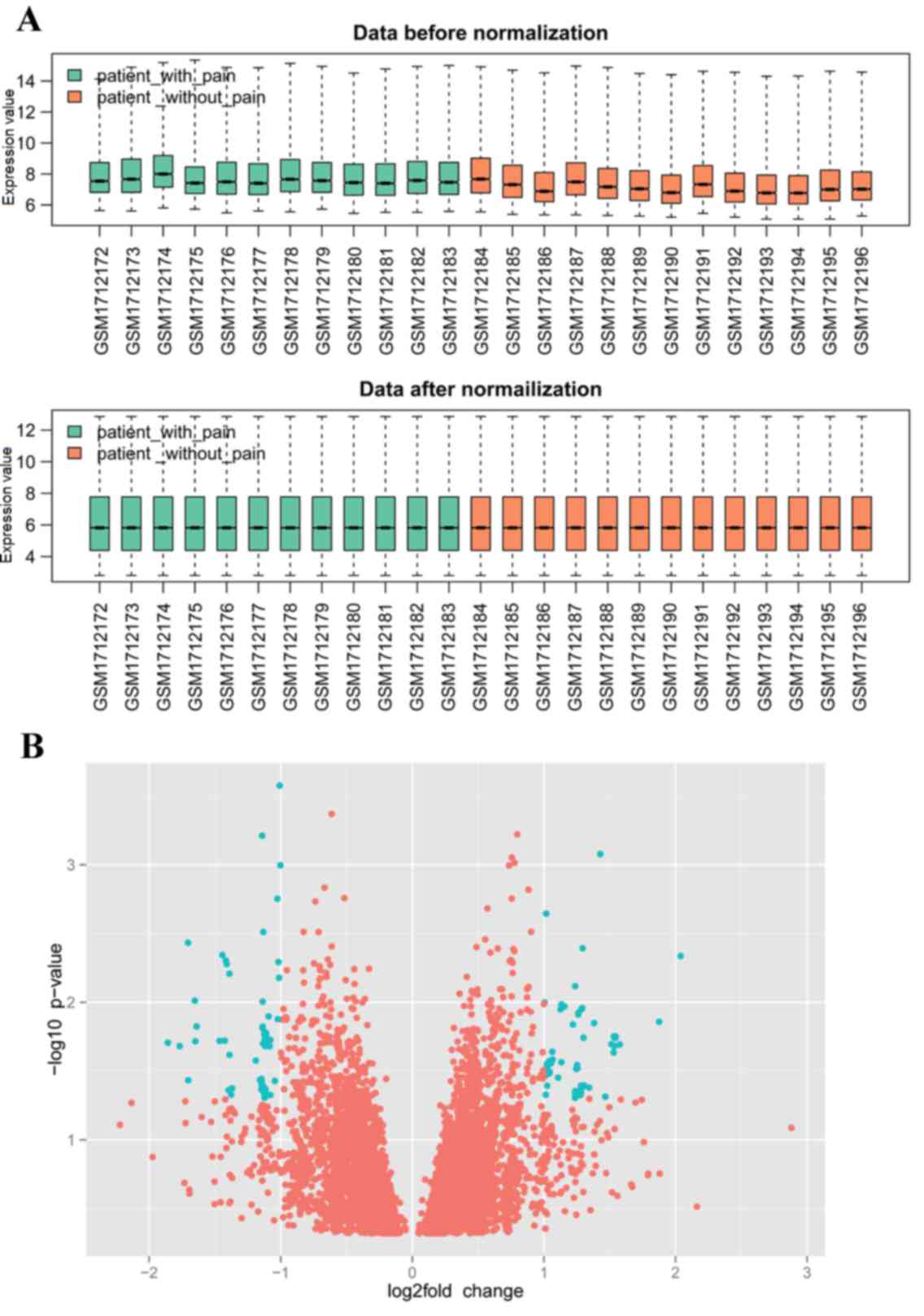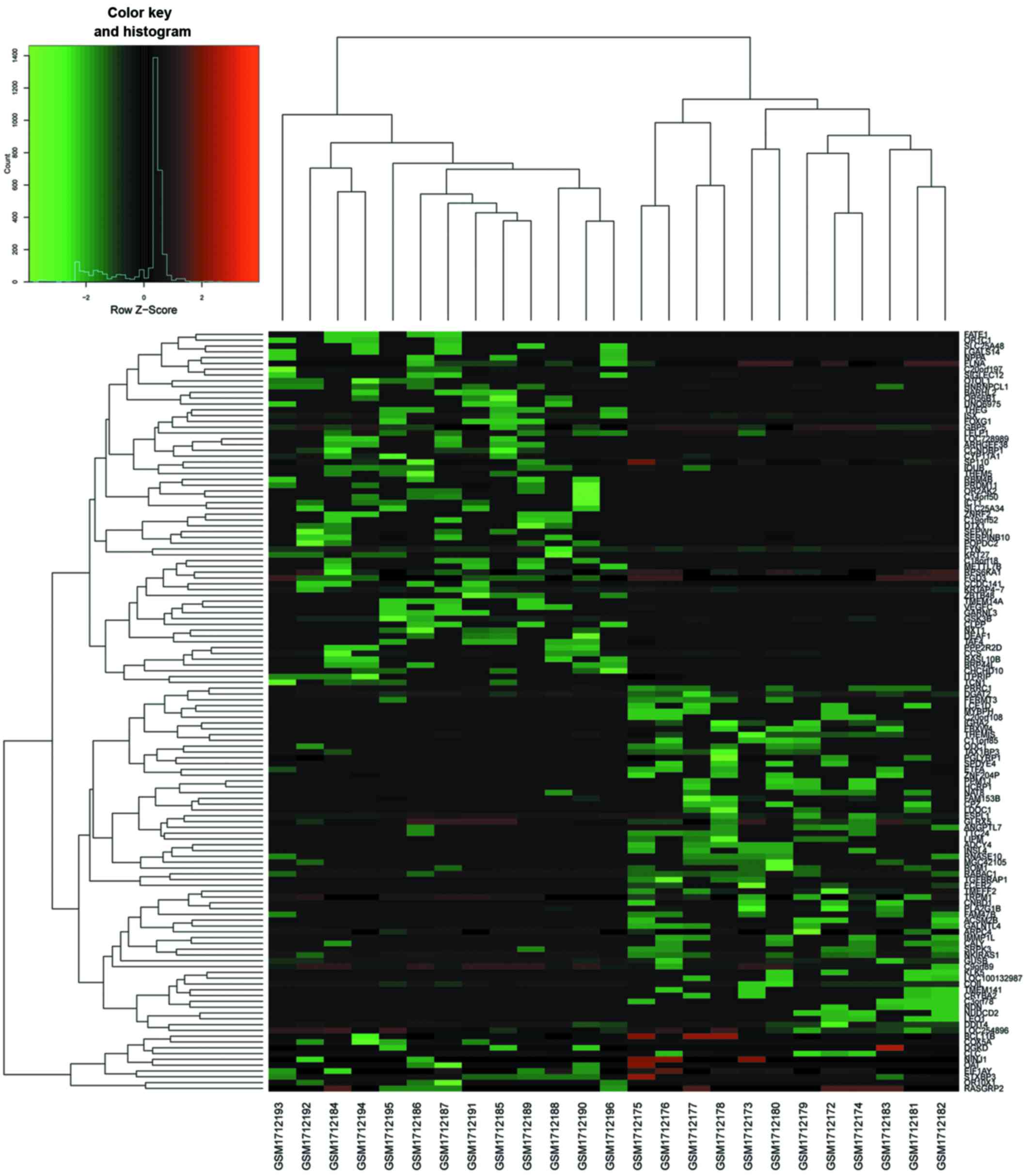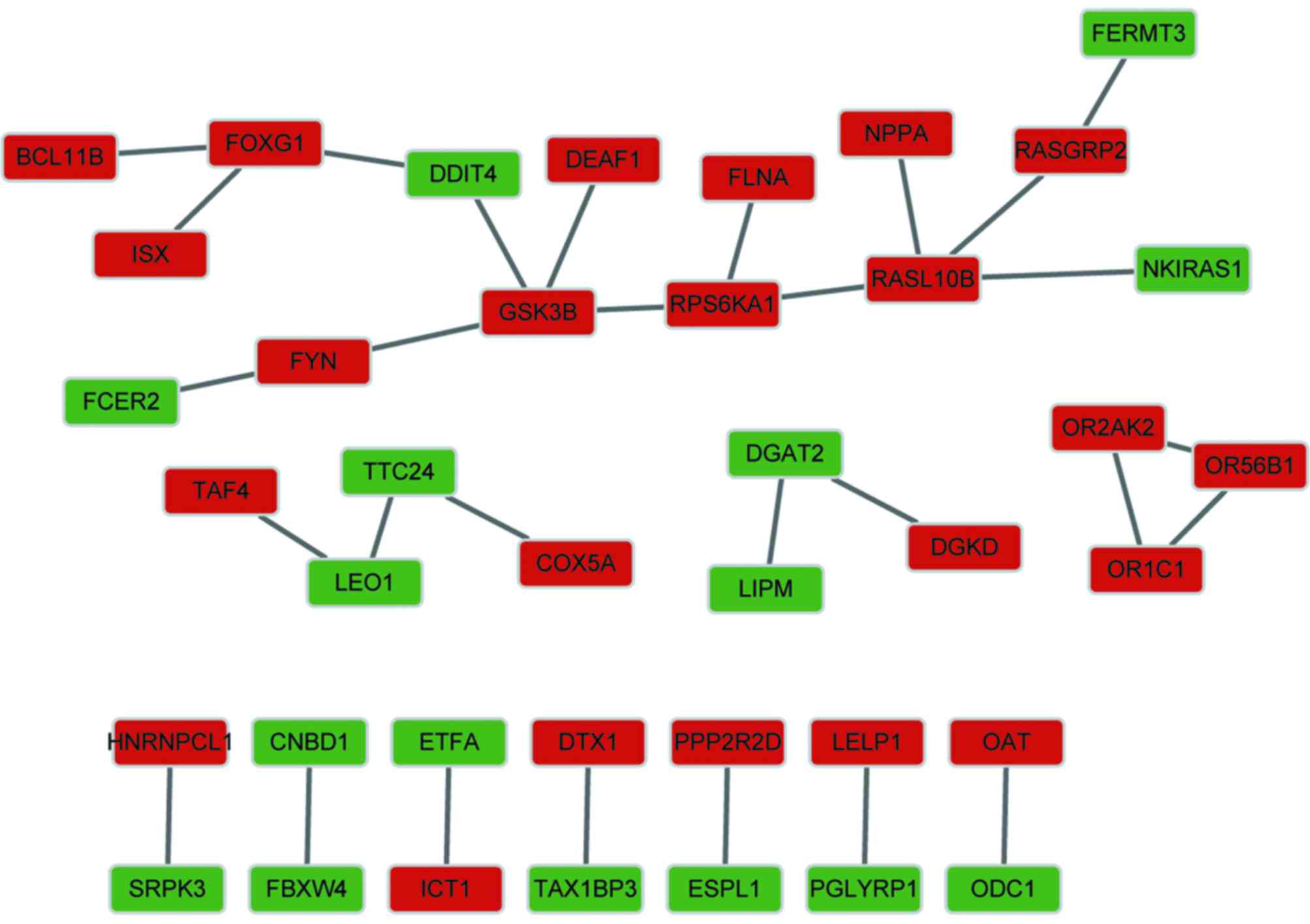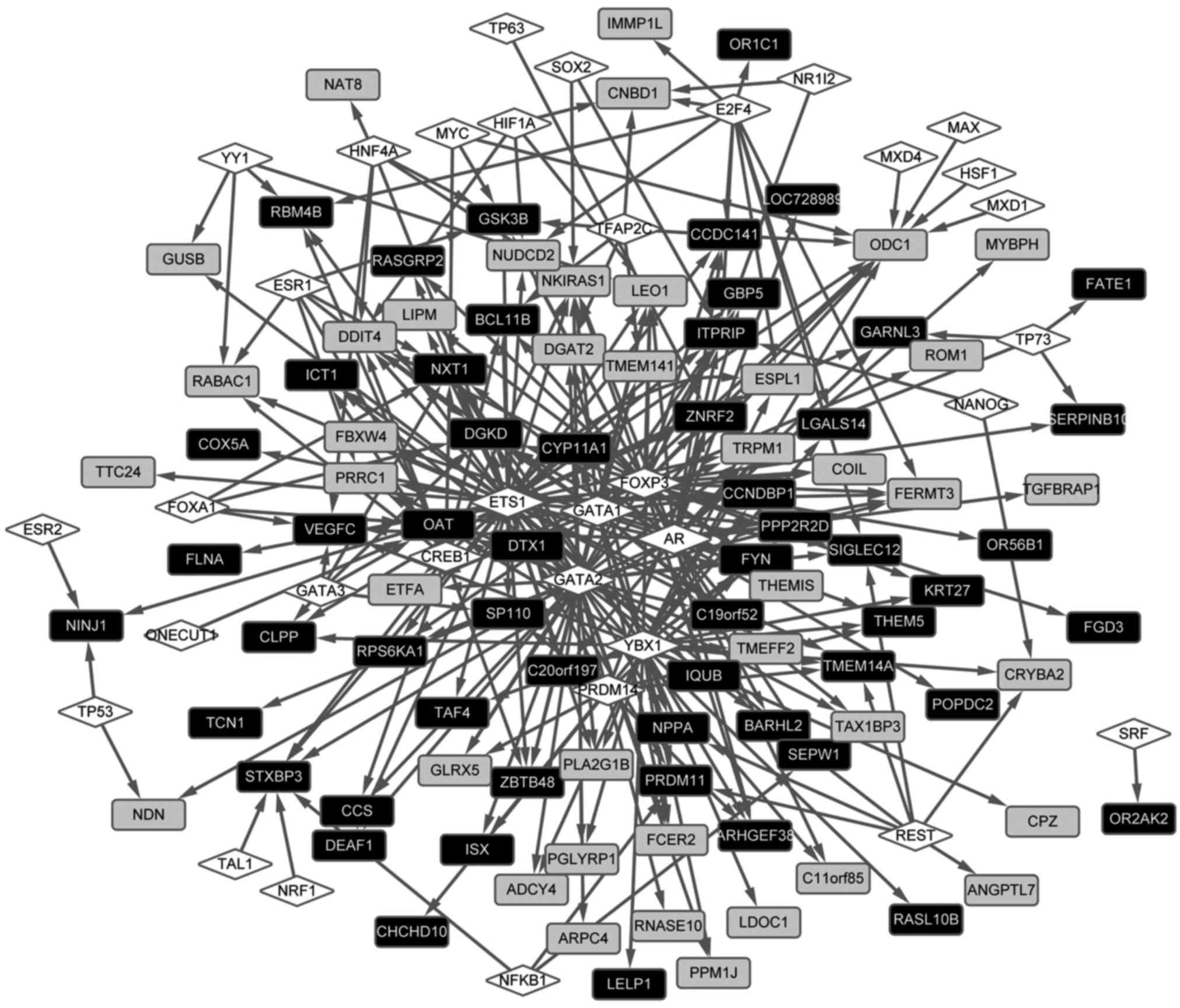|
1
|
Cao HQ and Dong ED: An update on spinal
cord injury research. Neurosci Bull. 29:94–102. 2013. View Article : Google Scholar : PubMed/NCBI
|
|
2
|
Finnerup NB and Baastrup C: Spinal cord
injury pain: Mechanisms and management. Curr Pain Headache Rep.
16:207–216. 2012. View Article : Google Scholar : PubMed/NCBI
|
|
3
|
Mehta S, Orenczuk K, McIntyre A, Willems
G, Wolfe DL, Hsieh JT, Short C, Loh E and Teasell RW: SCIRE
Research Team: Neuropathic pain post spinal cord injury part 1:
Systematic review of physical and behavioral treatment. Top Spinal
Cord Inj Rehabil. 19:61–77. 2013. View Article : Google Scholar : PubMed/NCBI
|
|
4
|
Finnerup NB and Jensen TS: Spinal cord
injury pain-mechanisms and treatment. Eur J Neurol. 11:73–82. 2004.
View Article : Google Scholar : PubMed/NCBI
|
|
5
|
Von Schack D, Agostino MJ, Murray BS, Li
Y, Reddy PS, Chen J, Choe SE, Strassle BW, Li C, Bates B, et al:
Dynamic changes in the microRNA expression profile reveal multiple
regulatory mechanisms in the spinal nerve ligation model of
neuropathic pain. PLoS One. 6:e176702011. View Article : Google Scholar : PubMed/NCBI
|
|
6
|
Schomberg D, Miranpuri G, Duellman T,
Crowell A, Vemuganti R and Resnick D: Spinal cord injury induced
neuropathic pain: Molecular targets and therapeutic approaches.
Metab Brain Dis. 30:645–658. 2015. View Article : Google Scholar : PubMed/NCBI
|
|
7
|
Saegusa H and Tanabe T: N-type
voltage-dependent Ca2+ channel in non-excitable microglial cells in
mice is involved in the pathophysiology of neuropathic pain.
Biochem Biophys Res Commun. 450:142–147. 2014. View Article : Google Scholar : PubMed/NCBI
|
|
8
|
Chen G, Park CK, Xie RG, Berta T,
Nedergaard M and Ji RR: Connexin-43 induces chemokine release from
spinal cord astrocytes to maintain late-phase neuropathic pain in
mice. Brain. 137:2193–2209. 2014. View Article : Google Scholar : PubMed/NCBI
|
|
9
|
Nesic O, Lee J, Johnson KM, Ye Z, Xu GY,
Unabia GC, Wood TG, McAdoo DJ, Westlund KN, Hulsebosch CE and
Regino Perez-Polo J: Transcriptional profiling of spinal cord
injury-induced central neuropathic pain. J Neurochem. 95:998–1014.
2005. View Article : Google Scholar : PubMed/NCBI
|
|
10
|
Vicuña L, Strochlic DE, Latremoliere A,
Bali KK, Simonetti M, Husainie D, Prokosch S, Riva P, Griffin RS,
Njoo C, et al: The serine protease inhibitor SerpinA3N attenuates
neuropathic pain by inhibiting T cell-derived leukocyte elastase.
Nat Med. 21:518–523. 2015. View
Article : Google Scholar : PubMed/NCBI
|
|
11
|
Sanchez-Palencia A, Gomez-Morales M,
Gomez-Capilla JA, Pedraza V, Boyero L, Rosell R and Fárez-Vidal ME:
Gene expression profiling reveals novel biomarkers in nonsmall cell
lung cancer. Int J Cancer. 129:355–364. 2011. View Article : Google Scholar : PubMed/NCBI
|
|
12
|
Kim DS, Figueroa KW, Li KW, Boroujerdi A,
Yolo T and Luo ZD: Profiling of dynamically changed gene expression
in dorsal root ganglia post peripheral nerve injury and a critical
role of injury-induced glial fibrillary acetic protein in
maintenance of pain behaviors. Pain. 143:114–122. 2009. View Article : Google Scholar : PubMed/NCBI
|
|
13
|
Kim CF and Moalem-Taylor G: Interleukin-17
contributes to neuroinflammation and neuropathic pain following
peripheral nerve injury in mice. J Pain. 12:370–383. 2011.
View Article : Google Scholar : PubMed/NCBI
|
|
14
|
Barrett T, Wilhite SE, Ledoux P,
Evangelista C, Kim IF, Tomashevsky M, Marshall KA, Phillippy KH,
Sherman PM, Holko M, et al: NCBI GEO: Archive for functional
genomics data sets-update. Nucleic Acids Res. 41(Database issue):
D991–D995. 2013. View Article : Google Scholar : PubMed/NCBI
|
|
15
|
Altman NS: An introduction to kernel and
nearest-neighbor nonparametric regression. The American
Statistician. 46:175–185. 2012. View Article : Google Scholar
|
|
16
|
Hastie T, Tibshirani R, Narasimhan B and
Chu G: impute: Imputation for microarray data. R package version.
1:2012.
|
|
17
|
López-Romero P, González MA, Callejas S,
Dopazo A and Irizarry RA: Processing of Agilent microRNA array
data. BMC Res Notes. 3:182010. View Article : Google Scholar : PubMed/NCBI
|
|
18
|
Chen YA, Tripathi LP and Mizuguchi K:
TargetMine, an integrated data warehouse for candidate gene
prioritisation and target discovery. PLoS One. 6:e178442011.
View Article : Google Scholar : PubMed/NCBI
|
|
19
|
Szklarczyk D, Franceschini A, Kuhn M,
Simonovic M, Roth A, Minguez P, Doerks T, Stark M, Muller J, Bork
P, et al: The STRING database in 2011: Functional interaction
networks of proteins, globally integrated and scored. Nucleic Acids
Res. 39(Database issue): D561–D568. 2011. View Article : Google Scholar : PubMed/NCBI
|
|
20
|
Shannon P, Markiel A, Ozier O, Baliga NS,
Wang JT, Ramage D, Amin N, Schwikowski B and Ideker T: Cytoscape: A
software environment for integrated models of biomolecular
interaction networks. Genome Res. 13:2498–2504. 2003. View Article : Google Scholar : PubMed/NCBI
|
|
21
|
Bovolenta LA, Acencio ML and Lemke N:
HTRIdb: An open-access database for experimentally verified human
transcriptional regulation interactions. BMC Genomics. 13:4052012.
View Article : Google Scholar : PubMed/NCBI
|
|
22
|
Wang JH, Zhao LF, Lin P, Su XR, Chen SJ,
Huang LQ, Wang HF, Zhang H, Hu ZF, Yao KT and Huang ZX: GenCLiP
2.0: A web server for functional clustering of genes and
construction of molecular networks based on free terms.
Bioinformatics. 30:2534–2536. 2014. View Article : Google Scholar : PubMed/NCBI
|
|
23
|
Hagen EM and Rekand T: Management of
neuropathic pain associated with spinal cord injury. Pain Ther.
4:51–65. 2015. View Article : Google Scholar : PubMed/NCBI
|
|
24
|
Moalem G and Tracey DJ: Immune and
inflammatory mechanisms in neuropathic pain. Brain Res Rev.
51:240–264. 2006. View Article : Google Scholar : PubMed/NCBI
|
|
25
|
Calvo M, Dawes JM and Bennett DL: The role
of the immune system in the generation of neuropathic pain. Lancet
Neurol. 11:629–642. 2012. View Article : Google Scholar : PubMed/NCBI
|
|
26
|
Huppa JB, Gleimer M, Sumen C and Davis MM:
Continuous T cell receptor signaling required for synapse
maintenance and full effector potential. Nat Immunol. 4:749–755.
2003. View Article : Google Scholar : PubMed/NCBI
|
|
27
|
Huang D, Khoe M, Befekadu M, Chung S,
Takata Y, Ilic D and Bryer-Ash M: Focal adhesion kinase mediates
cell survival via NF-kappaB and ERK signaling pathways. Am J
Physiol Cell Physiol. 292:C1339–C1352. 2007. View Article : Google Scholar : PubMed/NCBI
|
|
28
|
Hua S and Cabot PJ: Mechanisms of
peripheral immune-cell-mediated analgesia in inflammation: Clinical
and therapeutic implications. Trends Pharmacol Sci. 31:427–433.
2010. View Article : Google Scholar : PubMed/NCBI
|
|
29
|
Galli C, Piemontese M, Lumetti S, Manfredi
E, Macaluso G and Passeri G: GSK3b-inhibitor lithium chloride
enhances activation of Wnt canonical signaling and osteoblast
differentiation on hydrophilic titanium surfaces. Clin Oral
Implants Res. 24:921–927. 2013. View Article : Google Scholar : PubMed/NCBI
|
|
30
|
Beurel E, Michalek SM and Jope RS: Innate
and adaptive immune responses regulated by glycogen synthase
kinase-3 (GSK3). Trends Immunol. 31:24–31. 2010. View Article : Google Scholar : PubMed/NCBI
|
|
31
|
Mazzardo-Martins L, Martins D, Stramosk J,
Cidral-Filho F and Santos A: Glycogen synthase kinase 3-specific
inhibitor AR-A014418 decreases neuropathic pain in mice: Evidence
for the mechanisms of action. Neuroscience. 226:411–420. 2012.
View Article : Google Scholar : PubMed/NCBI
|
|
32
|
Hogarty MD, Norris MD, Davis K, Liu X,
Evageliou NF, Hayes CS, Pawel B, Guo R, Zhao H, Sekyere E, et al:
ODC1 is a critical determinant of MYCN oncogenesis and a
therapeutic target in neuroblastoma. Cancer Res. 68:9735–9745.
2008. View Article : Google Scholar : PubMed/NCBI
|
|
33
|
Rivat C, Richebé P, Laboureyras E, Laulin
JP, Havouis R, Noble F, Moulinoux JP and Simonnet G: Polyamine
deficient diet to relieve pain hypersensitivity. Pain. 137:125–137.
2008. View Article : Google Scholar : PubMed/NCBI
|
|
34
|
Bouché N, Lacombe Bt and Fromm H: GABA
signaling: A conserved and ubiquitous mechanism. Trends Cell Biol.
13:607–610. 2003. View Article : Google Scholar : PubMed/NCBI
|
|
35
|
Gwak YS and Hulsebosch CE: GABA and
central neuropathic pain following spinal cord injury.
Neuropharmacology. 60:799–808. 2011. View Article : Google Scholar : PubMed/NCBI
|













